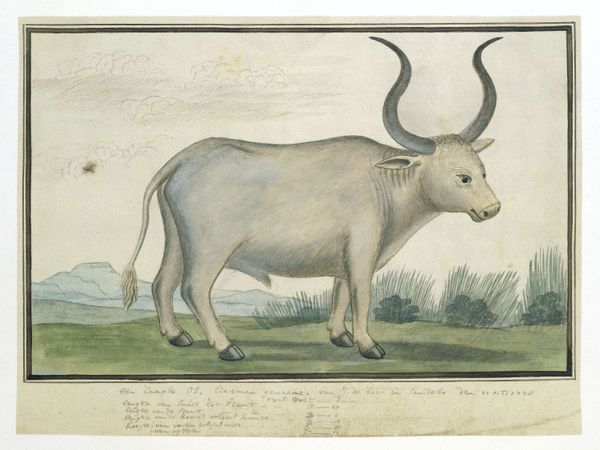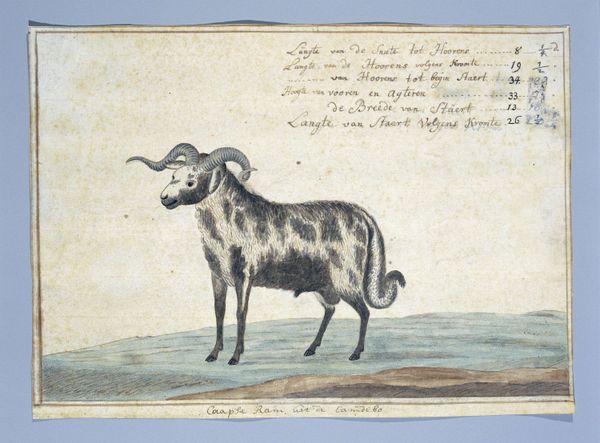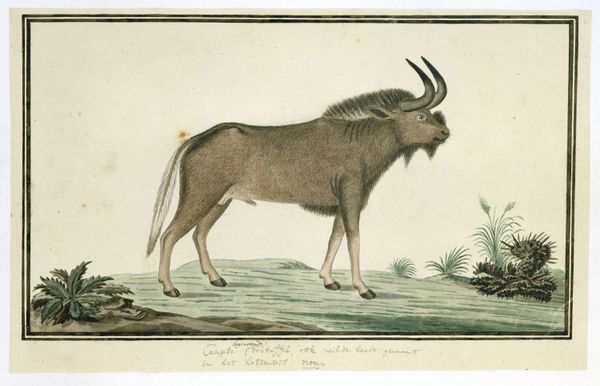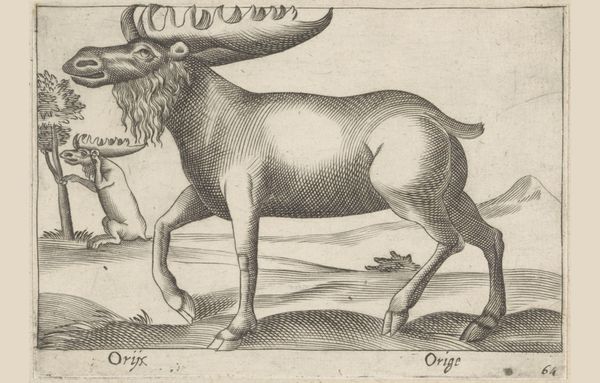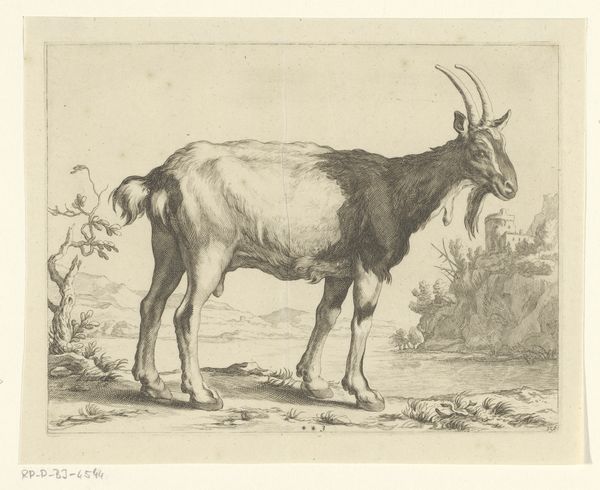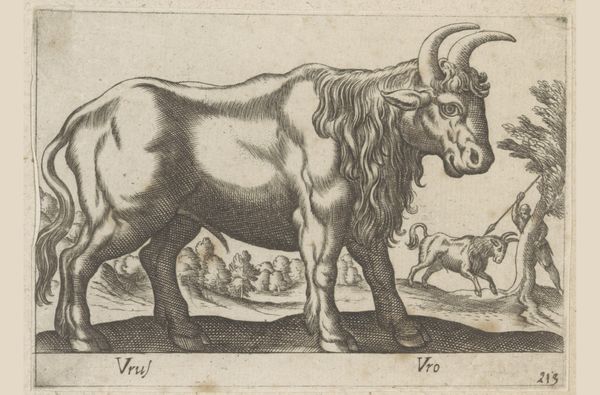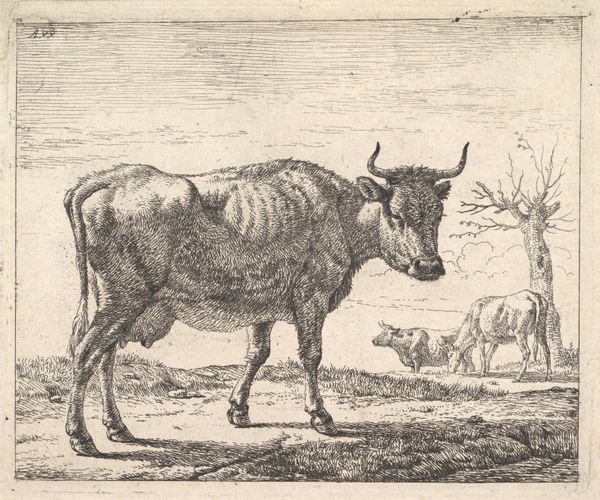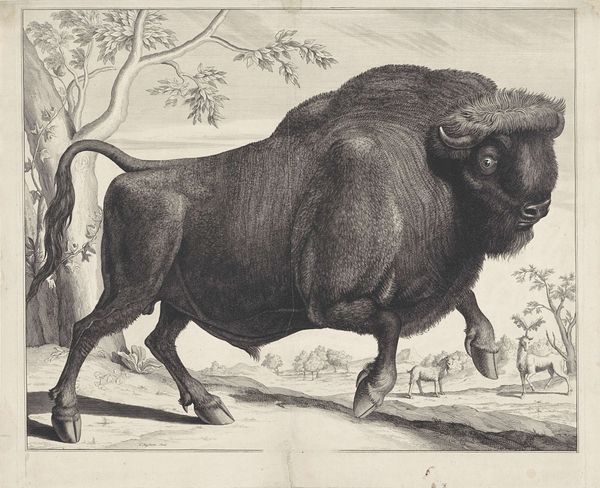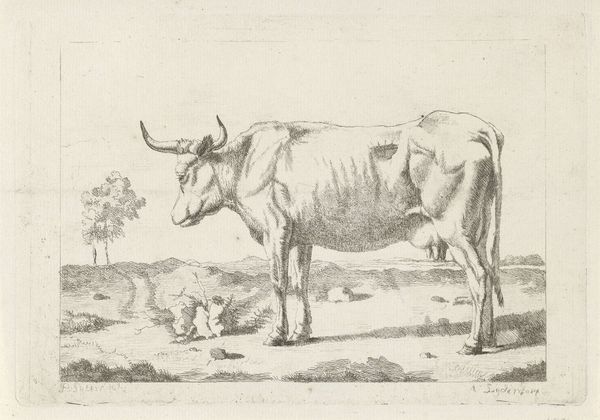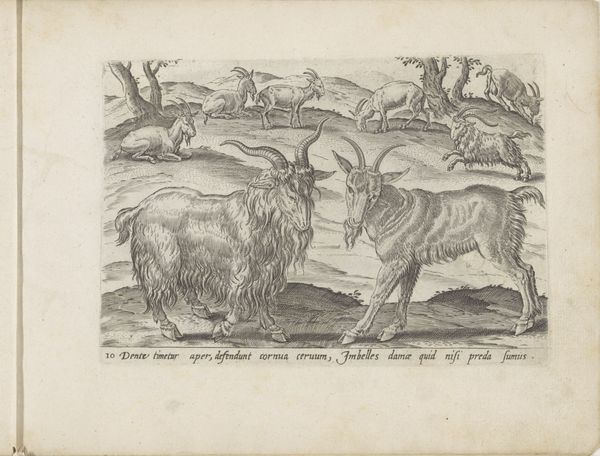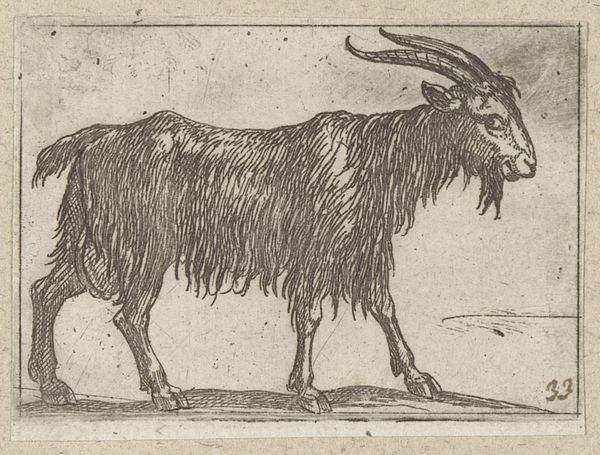
drawing, coloured-pencil
#
drawing
#
coloured-pencil
#
landscape
#
figuration
#
coloured pencil
#
realism
Dimensions: height 660 mm, width 480 mm, height 234 mm, width 328 mm, height 188 mm, width 306 mm
Copyright: Rijks Museum: Open Domain
Curator: Here we have "Bos taurus: Cape cow and calf," attributed to Robert Jacob Gordon, possibly from 1778, executed with drawing and colored pencil. What's your initial take on it? Editor: I'm immediately struck by the unassuming quality of the piece. It's direct, but strangely tender—especially in the careful rendering of the animals' hides, contrasting smoothly with the almost naive rendering of the landscape. The materiality points to the context of its production. Curator: Precisely! Gordon was a military officer and explorer, not formally trained as an artist. These weren't created for an art market, but rather served as scientific documentation during expeditions. Consider the drawing's role in constructing knowledge. Editor: Absolutely, this connects directly to labor. This meticulous study becomes crucial to classify, control and even capitalize on the natural resources, so this artistic approach served imperial aims, directly. It’s about appropriating knowledge through detailed visual record-keeping. Curator: The choice of medium says something too. Colored pencil allows for portability, detailed observation, but it is also very time consuming in producing fine lines to suggest the texture. What social rituals surround cattle rearing in the Cape at that period, and what cultural status are these beasts given through being measured, classified and illustrated? Editor: Good point. And it is crucial how the materiality plays in this. If we consider what resources would have been required, how that would reflect colonial extraction through pigments. It also invites us to examine how seemingly mundane artistic endeavors participated directly in shaping colonial perceptions of value of these livestock. Curator: I agree completely, because the image provides a tangible link between natural history, colonial governance, and scientific pursuit. We can appreciate how this seemingly straightforward piece served larger projects in the eighteenth century and afterwards. Editor: Definitely. Looking at it with this framework gives a totally new sense to what feels to be so humble, an aesthetic almost folksy—turns out to reveal so much about imperial ways of making value and imposing order.
Comments
No comments
Be the first to comment and join the conversation on the ultimate creative platform.
